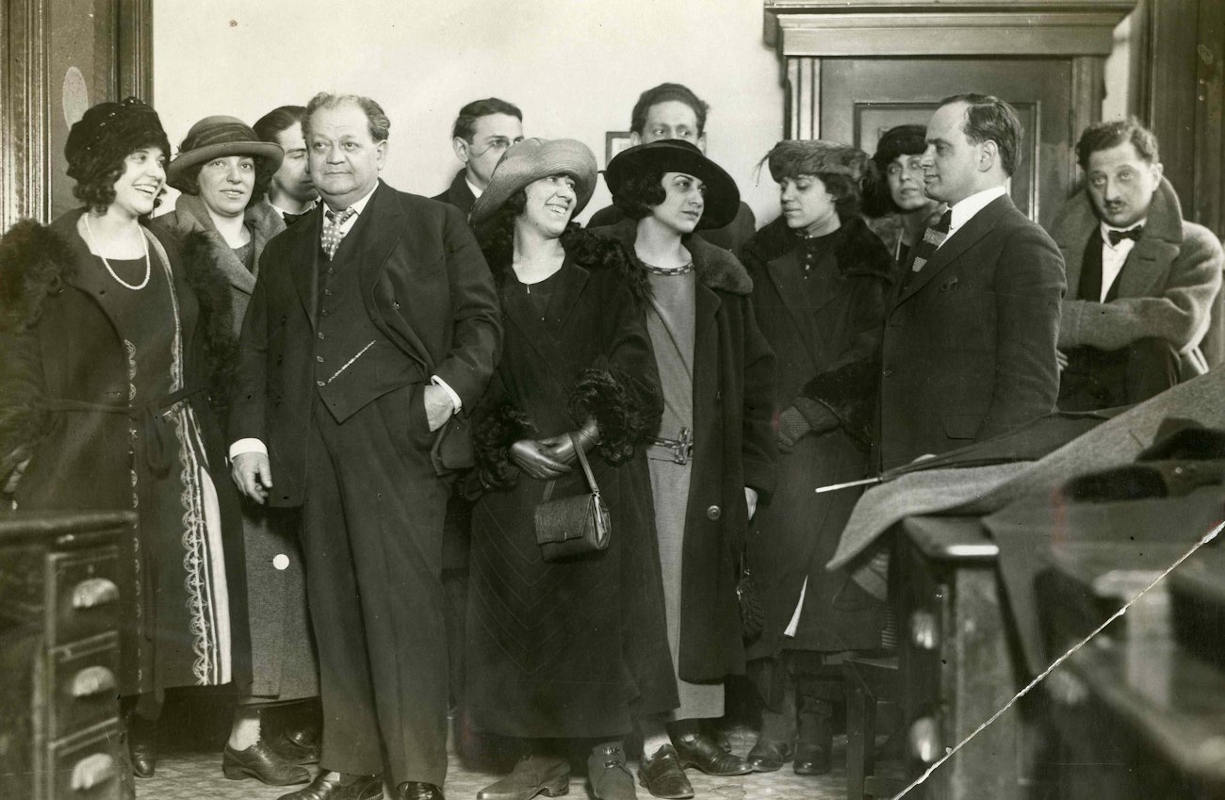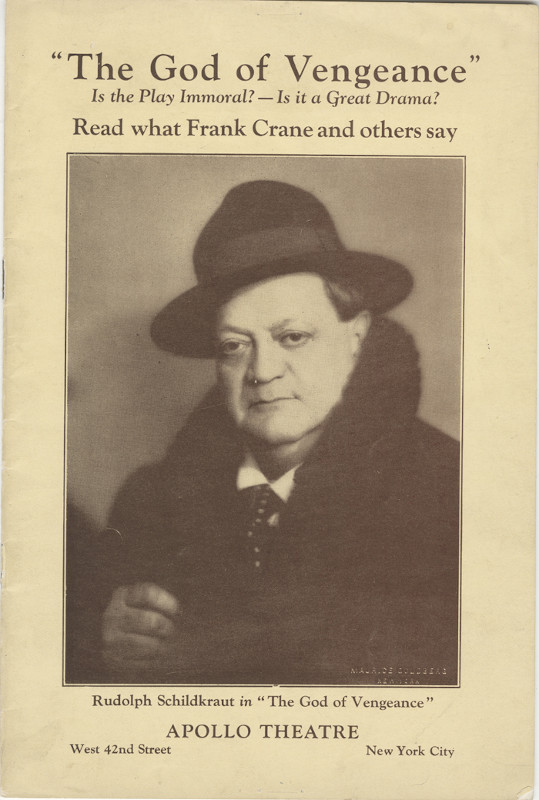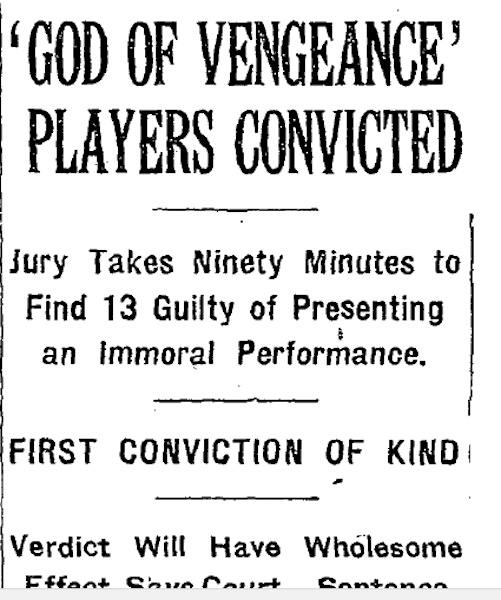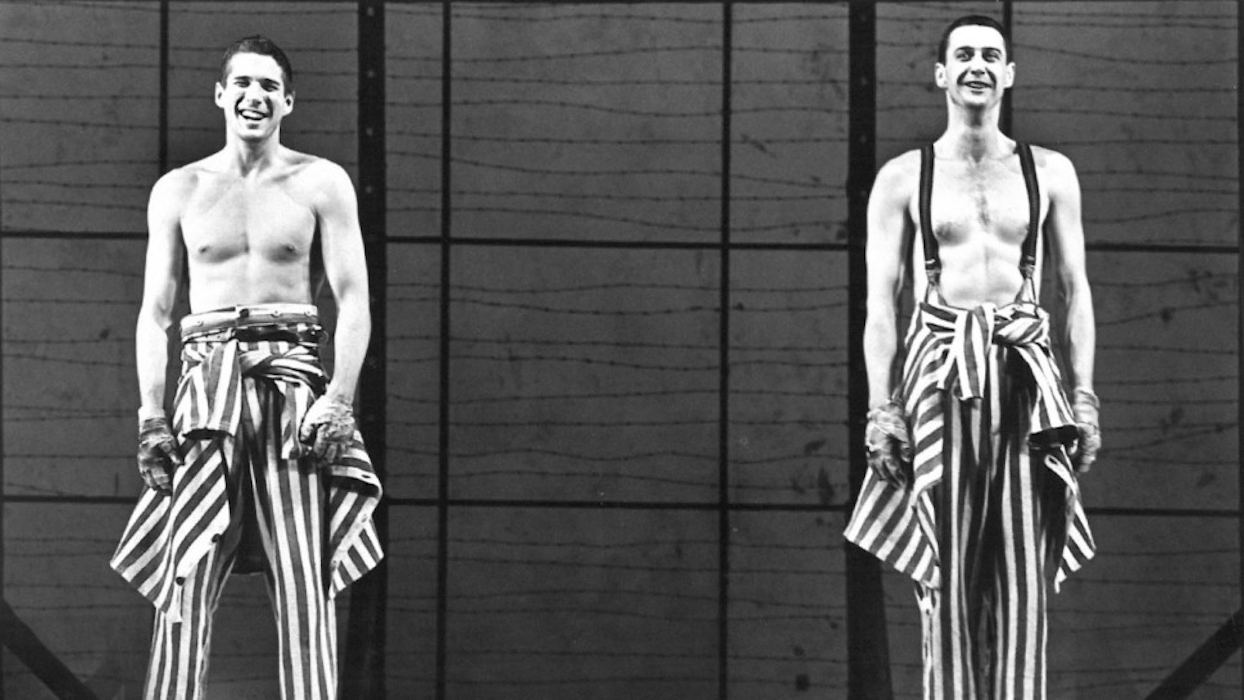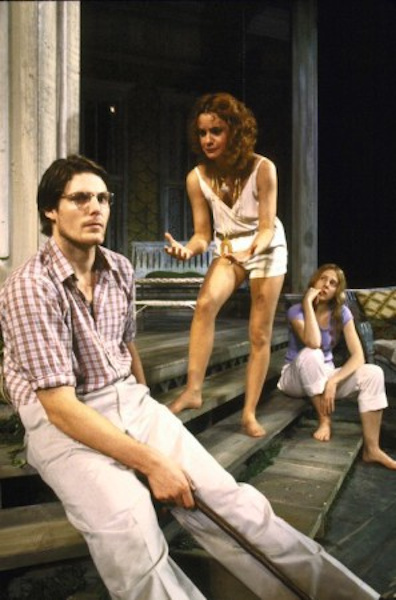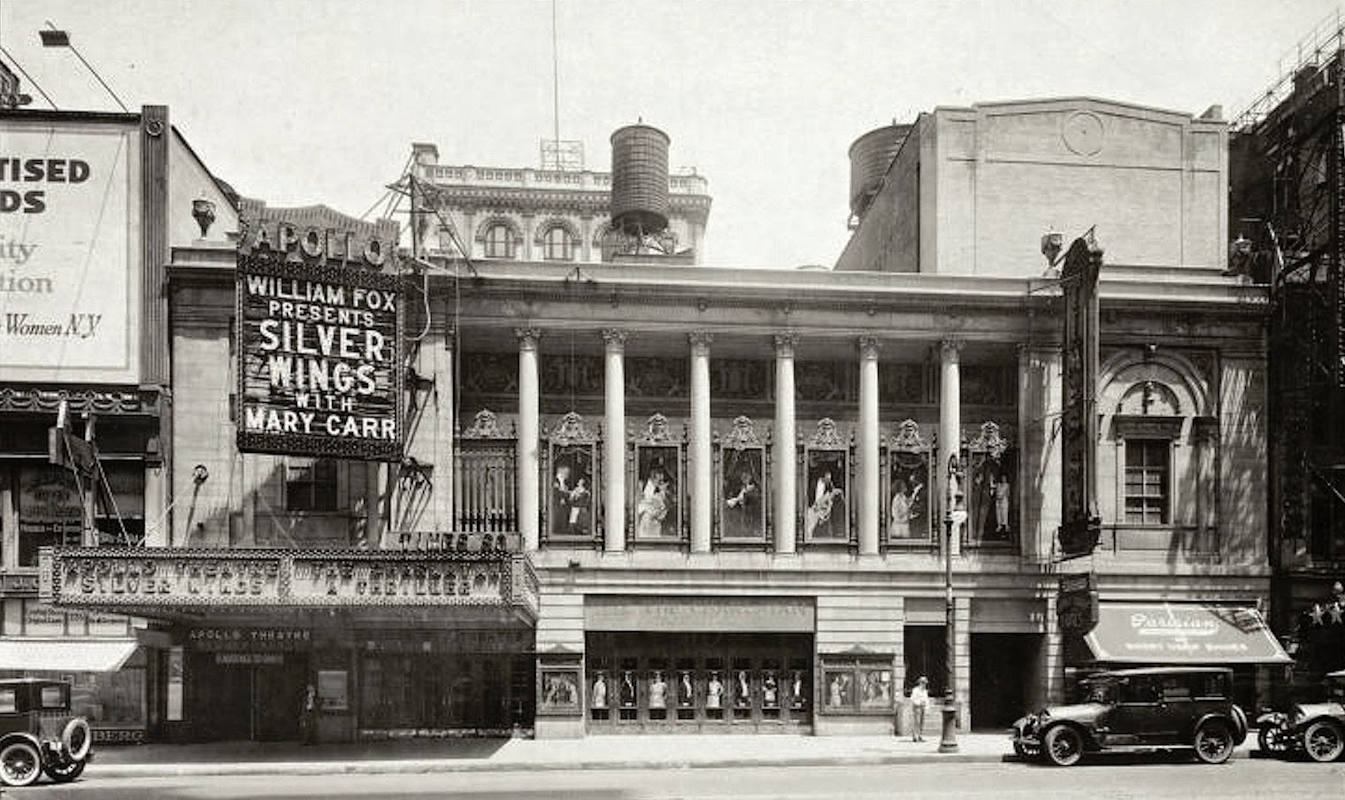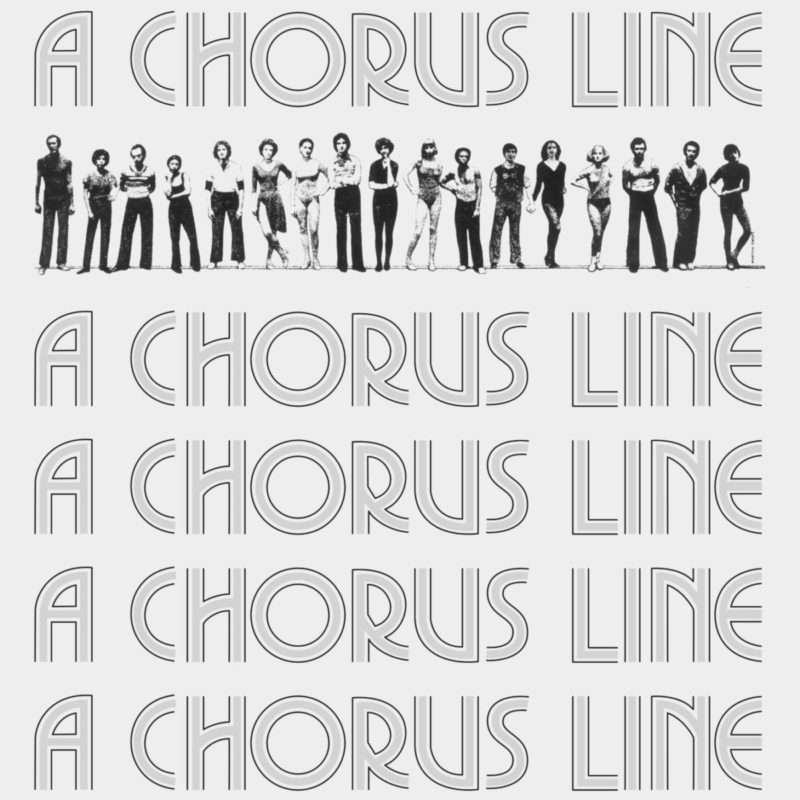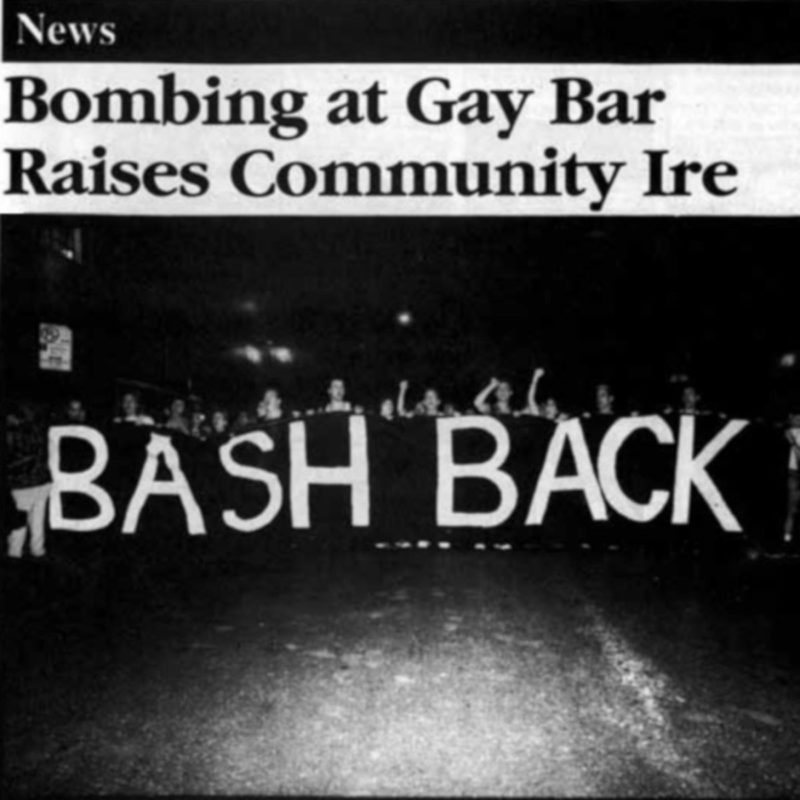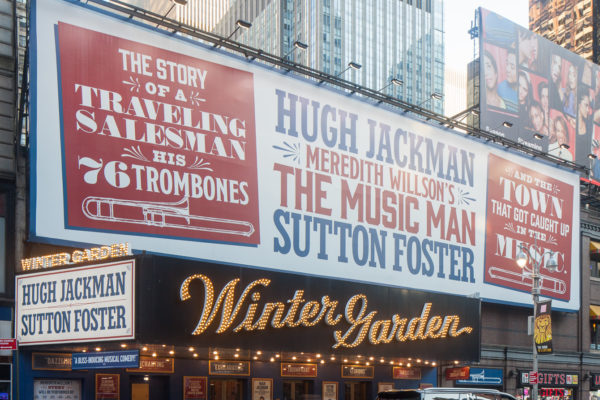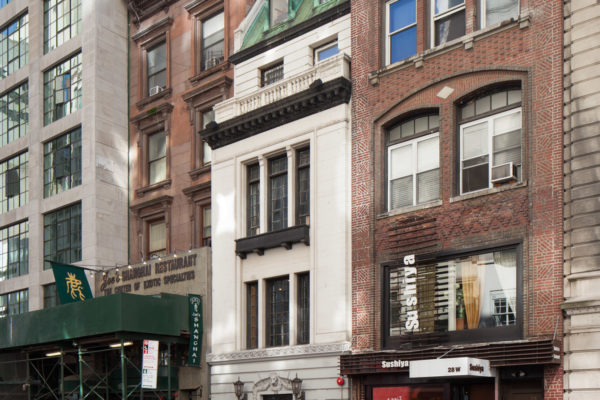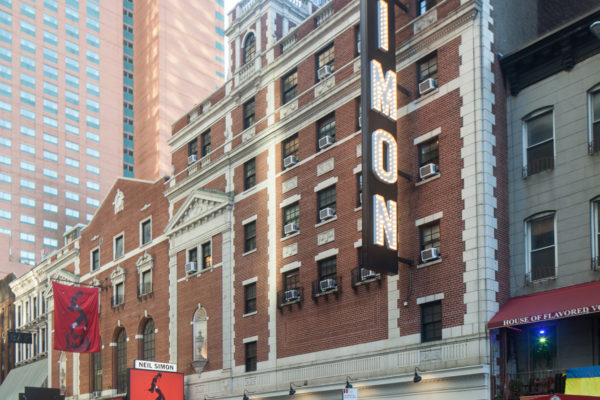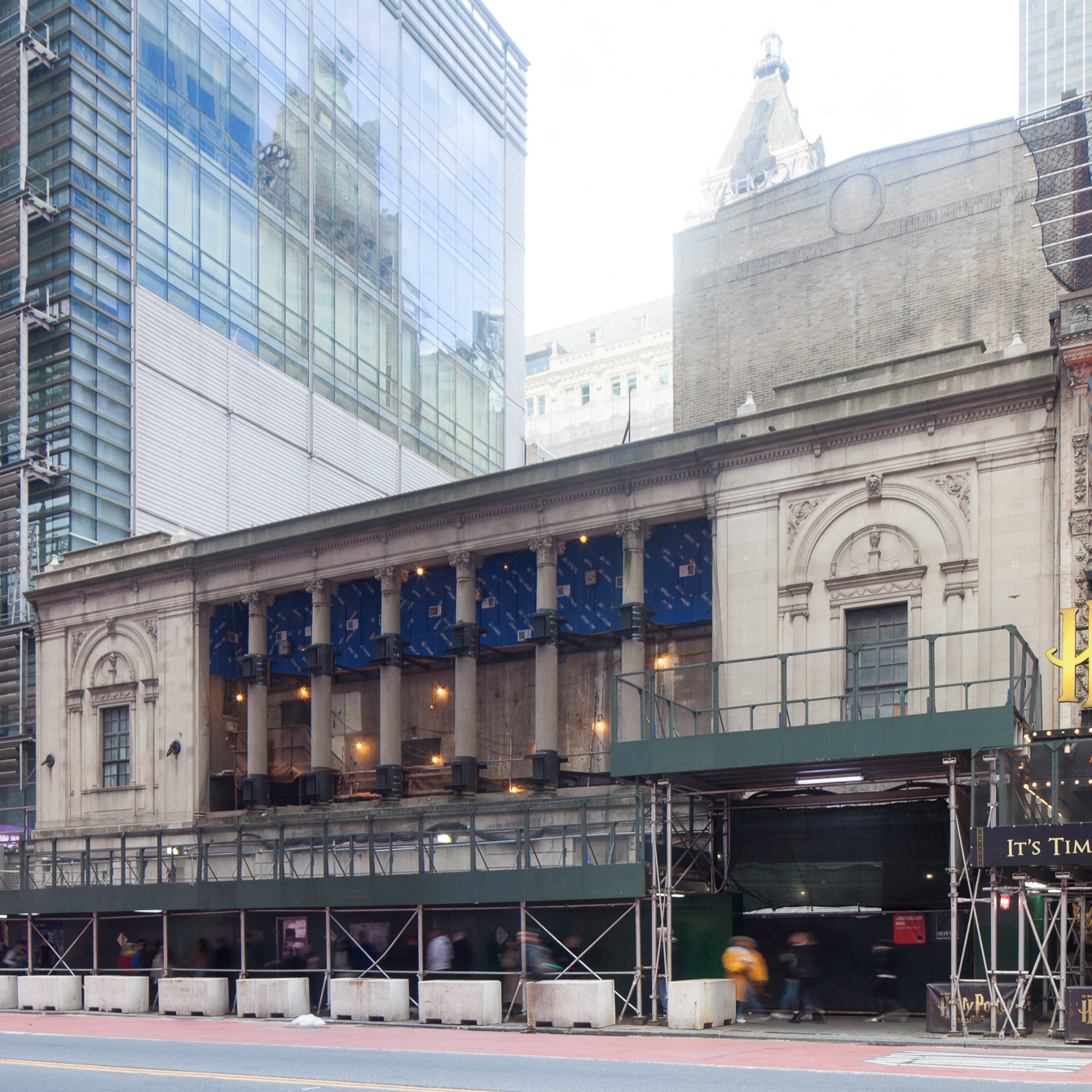
Apollo Theater (42nd Street)
after opening as the Apollo Theater in 1920, this site was renamed the New Apollo Theater in 1979 (today, only the theater's facade remains)
overview
Opened as the Apollo Theater in 1920, this venue is significant as the site of the first lesbian love scene depicted on Broadway with the staging of the Yiddish play The God of Vengeance (1923). Deemed immoral, the play’s entire cast and producer were arrested.
The venue was renamed the New Apollo Theater in 1979. Today, only the theater’s facade remains.
On the Map
VIEW The Full MapHistory
The Bryant Theater (1910), the first motion picture/vaudeville house on West 42nd Street, was rebuilt in 1920 as the Apollo Theater with a neo-Classical style façade that it shared with the Times Square Theater. The Apollo is quite significant in LGBT theater history as the site of the first lesbian love scene depicted on Broadway, in 1923.
Got fun nekome (God of Vengeance) was a play in Yiddish created in 1906 by a young Polish-Jewish writer, Sholem Asch. The story was about a Jewish brothel owner whose daughter has a lesbian relationship with one of his prostitutes. Opened in Berlin in 1907, it ran for six months, then was translated and performed in a dozen languages. The play in Yiddish was first brought to New York by David Kessler in 1907, where it sparked a press war among Yiddish newspapers. An English language version was presented in 1922 at the Provincetown Playhouse and then at the Greenwich Village Theater. From February 19 to April 14, 1923, it was performed in an altered version at the Apollo Theater.
Reaction from moralists in the city was swift. Arthur Hornblow in Theater Magazine fumed:
A more foul and unpleasant spectacle has never been seen in New York… the audience is treated to a nightgown scene in which the women make overtures to each other which goes so far beyond the pale of what is permissible that I can only voice my astonishment at the authorities allowing a thing of this sort to be continued before heterosexual audiences.
The Society for the Suppression of Vice, a group of self-appointed moralists that closely monitored the New York stage, lodged a complaint. Rabbi Joseph Silverman of Temple Emanu-El led the fight to shut down the play. Adolph Ochs, publisher of the New York Times, deemed it immoral and concurred in its closing. A grand jury, convened in secret, indicted the entire cast and producer on March 23 for “presenting an obscene, indecent, immoral and impure theatrical production,” and they were arrested the following day. The American Civil Liberties Union declined to assist. Acclaimed actor Rudolph Schildkraut and producer Harry Weinberger were convicted on charges of obscenity on May 23 and fined $200 each, while the rest of the cast received suspended sentences. This was the first conviction of a performer in a play for immorality by an American jury. The Court of Appeals eventually overturned the conviction. This story was told in the play Indecent by Paula Vogel that was produced Off-Broadway in 2015 and opened at the Cort Theater in 2017.
Other early productions with LGBT associations at the Apollo included:
- George White’s Scandals (1924), with costume design by Erte and Juliette
- George White’s Scandals (1925), with costume design by Erte and Hugh Willoughby
- George White’s Scandals (1926-27), with costume design by Erte
- Manhattan Mary (1927-28), with actor Ona Munson
- George White’s Scandals (1928-29), with costume design by Erte and Charles Le Maire
- Harlem (1929) by Wallace Thurman
- George White’s Scandals (1929-30), with costume design by Erte, Orry-Kelly, and others
The Apollo became a burlesque house in 1934, then a movie theater.
As the New Apollo Theater, it showcased two successful LGBT-associated productions:
- Bent (1979-80) by Martin Sherman, with actor David Marshall Grant, about persecution of gay men in Germany during the Holocaust
- Fifth of July (1980-82) by Lanford Wilson, about a gay paraplegic Vietnam War veteran, his boyfriend, and friends, directed by Marshall W. Mason, and with scenic design by John Lee Beatty
The theater’s interior was demolished in 1996 and portions were used in the Ford Center.
Entry by Jay Shockley, project director (June 2019, with multiple additions).
NOTE: Names above in bold indicate LGBT people.
Building Information
- Architect or Builder: Eugene de Rosa
- Year Built: 1910; rebuilt 1920
Sources
“The 1st List of: Gay/Lesbian/Bi Industry People, Both in Front and Behind the Camera,” www.imdb.com, May 31, 2013.
Adam Hetrick, “The Work of Broadway’s Gay and Lesbian Artistic Community Goes on Display Nov. 14 When the Leslie/Lohman Gay Art Foundation Gallery Presents ‘StageStruck: The Magic of Theatre Design’,” Playbill, November 14, 2007.
Arthur Hornblow, “Mr. Hornblow Goes to the Play,” Theater Magazine, April 1923, 68.
Cinema Treasures, cinematreasures.org.
Internet Broadway Database.
Kaier Curtin, “We Can Always Call Them Bulgarians”: the Emergence of Lesbians and Gay Men on the American Stage (Boston: Alyson Publications, 1987).
Morgen Stevens-Garmon, “’The God of Vengeance’: Is the Play Immoral?,” blog, Museum of the City of New York, bit.ly/3HzbZkH.
The New York Times: “‘God of Vengeance’ Cast is Indicted,” March 27, 1923; “‘God of Vengeance’ Players Convicted” and “Better Than Censorship,” May 25, 1923; “‘God of Vengeance’ Star is Fined $200,: May 29, 1923; “‘God of Vengeance’ Appeal,” Jan. 11, 1924; “‘God of Vengeance’ Fines Upheld,” June 28, 1924; “Actors Win on Appeal,” Jan. 22, 1925; “Court Frees Actors in ‘God of Vengeance,’” April 4, 1926.
Do you have more information about this site?
This project is enriched by your participation! Do you have your own images of this site? Or a story to share? Would you like to suggest a different historic site?

